Emerging Reader Round-Up: or simply a skull?
Today’s round-up is a tough category with not many suggestions, which makes me sad to be honest. Easy readers and early chapter books are a tough sell for Newbery glory, though they reach such an important demographic: people learning to read! In an earlier post someone mentioned if Frog and Toad set the bar too high and I wonder if it’s true. But too be honest, I’m not sure if I’ve had an easy reader lately that I thought deserved everything. Maybe this is the year for. THE SKULL? People call it a long shot, but you never know.
The Bulletin for the Center for Children’s Books actually had a special award The Gryphon that honored these types of titles, but the award was discontinued in 2021. And there’s the ALSC Geisel award given annually to the author(s) and illustrator(s) of the most distinguished American book for beginning readers published in English in the United States during the preceding year.
ADVERTISEMENT
ADVERTISEMENT
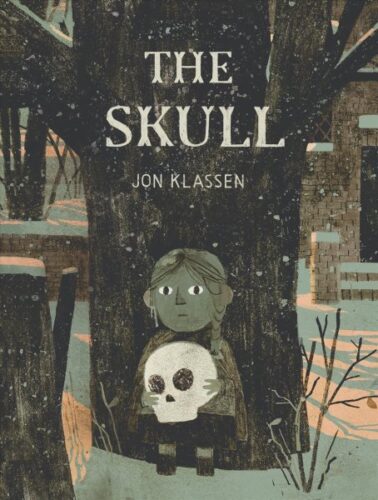
On our list this year, we have only two contenders: THE SKULL by Jon Klassen that could be a chapter book, a picture book, an easy reader– is the quality in the uncertainty. This title has three suggestions and FOUR nominations so far.
And the other Heavy Medal contender is HENRY LIKE ALWAYS with two suggestions and no nominations. This story about a young student who is used to routine and doesn’t like when things are different, may seem slow but is also very relatable, has consistent plot development, predictable but solid delineation of characters, strong themes of adjusting to change… is the problem with these books that they are too predictable?
THE SKULL is anything but predictable though. Yes, it’s a retelling of a Tyrolean Folktale, where a young girl and a lonely skull save each other. In the original version the skull is transformed into a lady in White which supposedly Klassen didn’t like.
Klassen develops all the elements of a spooky story, with a very very strongly developed setting of an abandoned house in a deep, dark, forest- with fireplaces and stairs, and balconies.
ADVERTISEMENT
ADVERTISEMENT
The theme is also that of friendship and being there for one another. As Otilla told the Skull not to worry she would take care of the body herself. And she did.
I did struggle with the holes in this story. Why did Otilla run away? Is anyone going to come looking for her? Maybe it’s unnecessary that we know these details but still…
Steven mentioned at some point that maybe this is a Caldecott contender. I think the argument can be made that the book depends on the illustrations too much. I read this out loud on Zoom without showing illustrations, and my coworker said it “lost the spook factor.”
THE SKULL is definitely the top contender in this category and I would love to hear more about it and any other titles? Any?
I was trying to argue that EVERGREEN by Matthew Cordell qualified in this category… but I’m pretty sure it’s solidly in picture book. Especially when I looked at my consortiums catalog and it was ONLY classified as a picture book. Are there any other titles we’re missing this year? A new MARISOL RAINEY came out this year, but it’s the third book in the series, with not a ton of love- ONLY ONLY MARISOL RAINEY.
Our next Wednesday Round-Up is picture books on the 18th, which I’m excited to talk about. To see our past posts: nonfiction, graphic novels, and poetry, look here.
Filed under: Book Discussion
About Emily Mroczek-Bayci
Emily Mroczek (Bayci) is a freelance children’s librarian in the Chicago suburbs. She served on the 2019 Newbery committee. You can reach her at emilyrmroczek@gmail.com.
ADVERTISEMENT
ADVERTISEMENT
SLJ Blog Network
The 2024 Ninja Report: Bleak
A Sequel Coming This Summer That You Won’t Want to Miss: Bob Shea Discusses His Latest
Review| Agents of S.U.I.T. 2
Navigating the High School and Academic Library Policy Landscape Around Dual Enrollment Students
Read Rec Rachel: New YA May 2024
ADVERTISEMENT



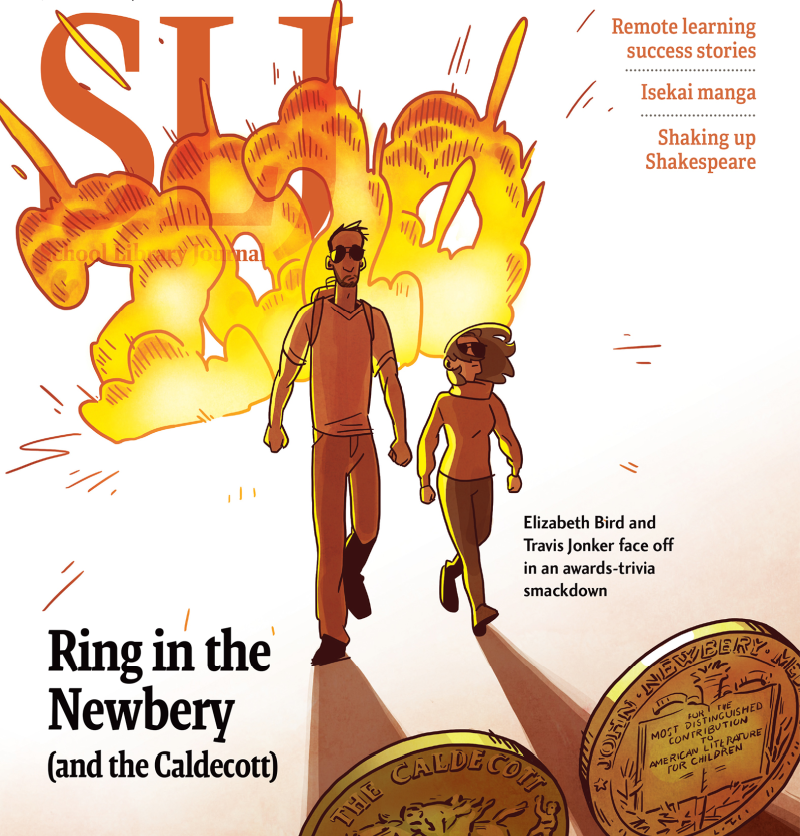
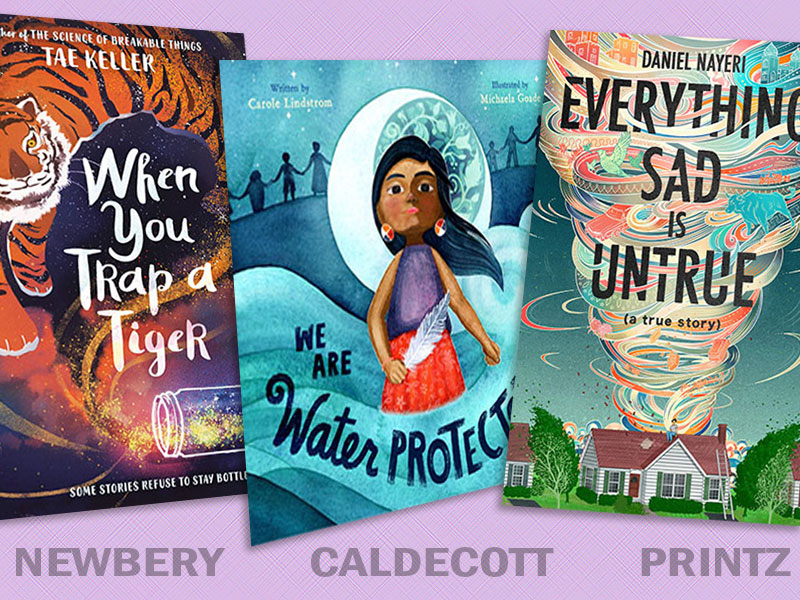
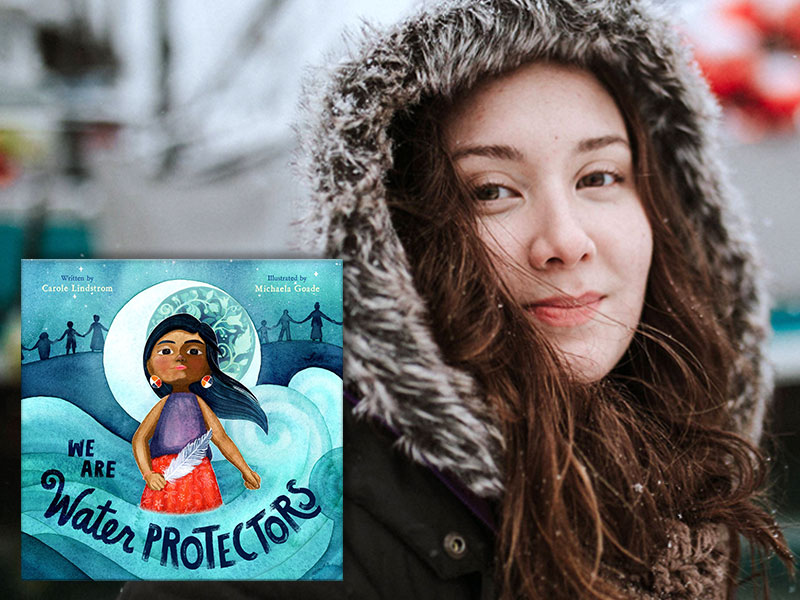
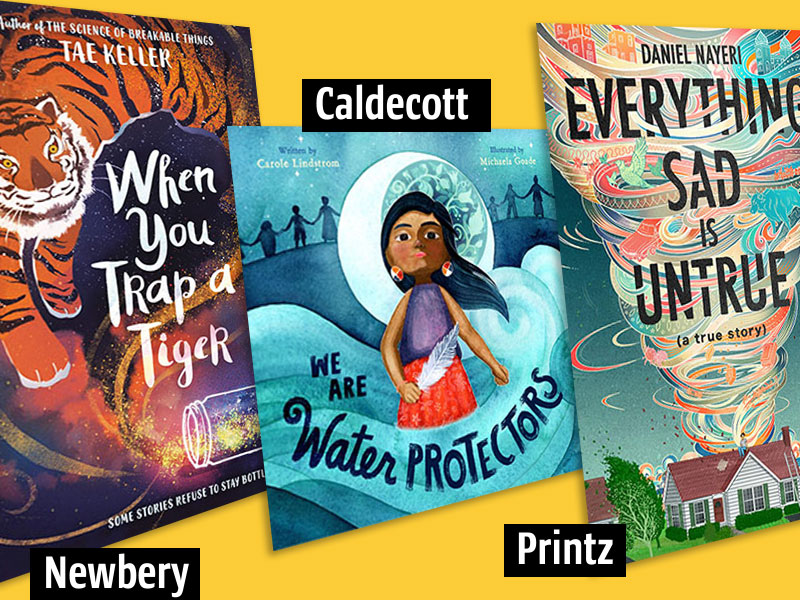
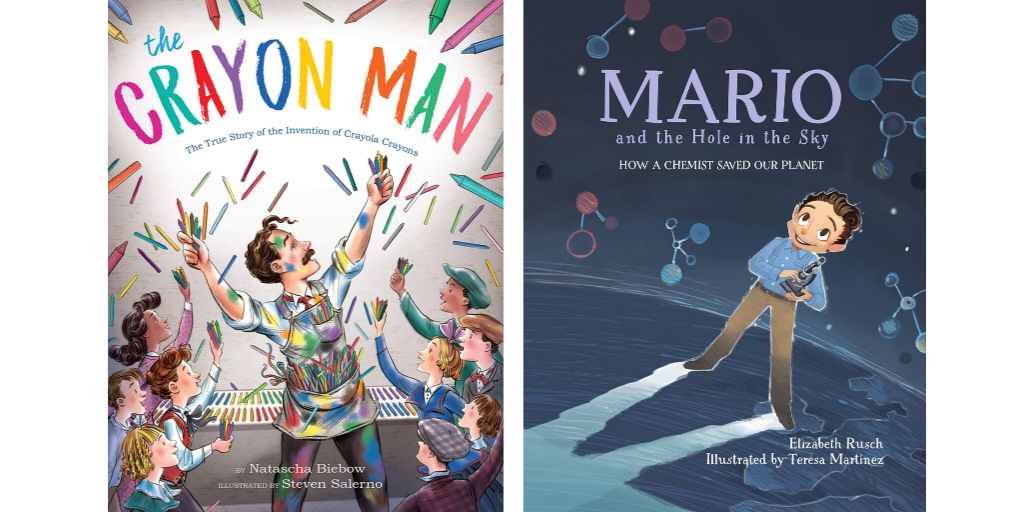
In the early chapter book category, I’d be curious to see what people thought of SHERMY AND SHAKE, THE NOT-SO-NICE-NEIGHBOR. Its author, Kirby Larson, is a Newbery Honor winner (for Hattie Big Sky, the BUFFALO FLATS of 2006), and it shows in this book’s quality. As far as I can tell, the biggest strike against it is, again, that it isn’t Frog and Toad. On Goodreads, I wrote, “The bar for odd-couple chapter books is really, really high, and Shermy and Shake aren’t even eccentric animals nor are there the moments of transcendence that some of these books have.” After mulling it over, I decided that wasn’t a reason not to give it 5* given that there was nothing I disliked about the book and had only nice things to say. Still, I’m not sure which side of the Newbery contender line this falls, even if Frog and Toad are too high a standard. I will say that I think its handling of the Newbery criteria are certainly as good as or better than a lot of other books we are talking about.
This really might be the hardest type of book to shine in terms of the Newbery Criteria. As Emily mentions, they can be very predictable, a quality that doesn’t rack up points in terms of “development of a plot.” But for new readers, predictability can be an essential feature. Other assets for new readers include: Fewer characters, and less complex ones; themes that are pretty straightforward; simple language. It almost seems like the closer you get to early reader perfection, the further you get from Newbery-ness.
That’s why I’m so glad we have the Geisel Award, which does honor those early reader qualities. The Geisel Criteria notes the need for “repeated” words and “simple and straightforward” sentences. Pictures as “clues to the text” also play into it.
Still, I think a Newbery Committee could recognize a truly successful early reader as “the most distinguished contribution to American literature.” As Emily points out, these books are specifically aimed at ” people learning to read!” and achieving excellence in that area could be seen as the highest achievement. But having said all that, I haven’t seen that book this year either….
I love THE SKULL, but I’m not sure that it’s Newbery-quality. I think it will definitely be in the running for the Caldecott and maybe for the Geisel. I’d like to know what people think about its kid appeal. My own kids love it, but like me, they are weird and we’re all big Jon Klassen fans. I probably wouldn’t choose it for a story time, which is usually my standard for “would appeal to most kids.” I also wondered why Otilla ran away and why it didn’t seem like anyone would be looking for her – I expected that to be a plot point and it just wasn’t!
One I haven’t gotten a chance to read yet (my hold just came in yesterday and went straight to my 6-year-old) is CORNBREAD & POPPY AT THE MUSEUM, also by Matthew Cordell. Another great-but-maybe-not-Newbery-quality early chapter book series.
I read THE SKULL out loud to a group of 2nd-3rd graders and they gave the “not scary enough” label. Then I tried to show it to my niece and was immediately told “too scary” now that I think about it.. scary books are also probably a tough sell with this age group (kids are on opposite sides of the scary spectrum)…
It doesn’t come out until early December, but I’m looking forward to HORNBEAM ALL IN, the first in a new series by Cynthia Rylant. When it comes to Early Readers that might have been Newbery contenders, her “Henry and Mudge” and “Mr. Putter and Tabby” books were right up there.
a December publication! GoodnesS! Added to my list (which I’m trying to decrease thank you)
I am probably not the best person to opine on Jon Klassen, since I do not really appreciate his sense of humor. Too harsh for me. But The Skull goes over the line, I think. Otilla gets rid of a merely annoying creature by smashing its body into teeny tiny bits with great abandon. A little too close to “killing” it in my view. (Yes, I know, I am very sensitive.)
I would be surprised if this is an award winner.
I freaking loved The Skull. It was so weird and bizarre and out there. Do I think it’s Newbery worthy….no. Could it be Geisel….maybe….
THE SKULL certainly stands out as “distinctive”…there’s not really another book like it this year. It excels in that “development of a plot” element, especially with the limits of a short book with simple vocabulary. I actually think that not knowing why Otilla ran away is a strength. It creates mystery and tension right off. We don’t know the details, but we know it was something really bad. That first sentence is perfect: “Otilla ran and ran.” (p 1) And then her name being called, where “she couldn’t tell if it was someone’s voice or the wind in her ears.” (4) Very gripping.
And the author doesn’t tease us about it, but deftly shifts the action to focus around the relationship between Otilla and the skull. Otilla’s past comes up again just briefly, to remind us (and to tell the skull) that she narrowly escaped something awful:
They looked out over the forest.
“You said you ran away,” said the skull.
“Yes,” said Otilla.
“You don’t want them to find you.”
“No,” said Otilla. “I don’t.”
The skull waited to see if she wanted to say any more, but she didn’t
“All right,” said the skull. (40-41)
We also don’t know the backstory of the skull and the skeleton. But there’s a neat (and creepy) parallel between the skull’s fears and Otilla’s:
“When it finds me, it chases me.”
“Has it ever caught you?” said Otilla?
“No,” said the skull quietly. “But I am not as fast as I used to be.”
Otilla looked closely at the skull.
“You don’t want it to catch you.”
“No,” whispered the skull. “I don’t.” (53-54)
As the suspense increases, so does the bond between Otilla and the skull. They both know fear. They both appreciate peaceful simple things: a nice view; dancing; hot tea; pajamas. And they recognize that they can help each other. We don’t know a lot about either character, but enough to understand and care about them.
It is true that those illustrations do add a lot. I think the story is plenty spooky without them, but even more so with them…that first view of the skeleton at the door (61) for example. And the pictures even tell key pieces of the plot on their own, like when the skull falls from the tower. But even that big moment takes on a more fascinating and memorable aspect when the text describes Otilla methodically disposing of the broken bones (79-86). And I love the way she doesn’t really tell the skull what she did, but also does, in a way:
“I wonder if the skeleton will ever come back,” said the skull.
Otilla cut a piece of pear.
“It won’t,” she said. (94)
The “appropriateness of style” is just right too. The short clipped sentences will help new readers, but I see that serving even more as a storyteller’s voice. Using such simple, direct language to describe a bizarre, fantastical tale is really effective; by understating the eeriness, it actually heightens it somehow. It’s a technique oral storytellers of scary stories often use. There’s a lot of emotion in this story, especially fear (of what Otilla ran from and the skeleton) and affection (between Otilla and the skull). But, in another bold stylistic choice, there’s virtually no descriptions of emotions…just what the characters do and say…nothing really about what they think, either. And yet we get to know and understand them so well.
I really didn’t mean for this comment to be so long, but with the book right in front of me on a second read, I keep seeing more and more. Which for me is always a positive quality in a Newbery contending book…
Wow! I loved reading your analysis, and now I want to read this book again. To be honest, I was SO excited to get my hands on this book after falling completely in love with We Found a Hat (a much more simple book, but one which I love, nonetheless). I bought The Skull and was immediately disappointed; I wanted more. I wanted a moral – a lesson. Last week (reservations aside) I read The Skull aloud to each of my three classes of 6th graders. They really enjoyed it! I enjoyed it more, reading it with them. And I realized that maybe I’m approaching The Skull the wrong way. Maybe there isn’t supposed to be a lesson. Or maybe there is and I just need to read it again (a fifth time). I think I do need to read it again because it wasn’t until I read your analysis that I thought – I wonder if the voice she heard in the woods was her dad or her mom looking for her… During a fifth read, I would also like to pay more attention to Klassen’s descriptions of characters’ thoughts, feelings, speech, and actions. I think you’re right – he doesn’t describe many of the characters’ thoughts and feelings. Why not? And how does that effect the reader’s interpretation of the characters in the story. Hmm… Thanks for your comment!